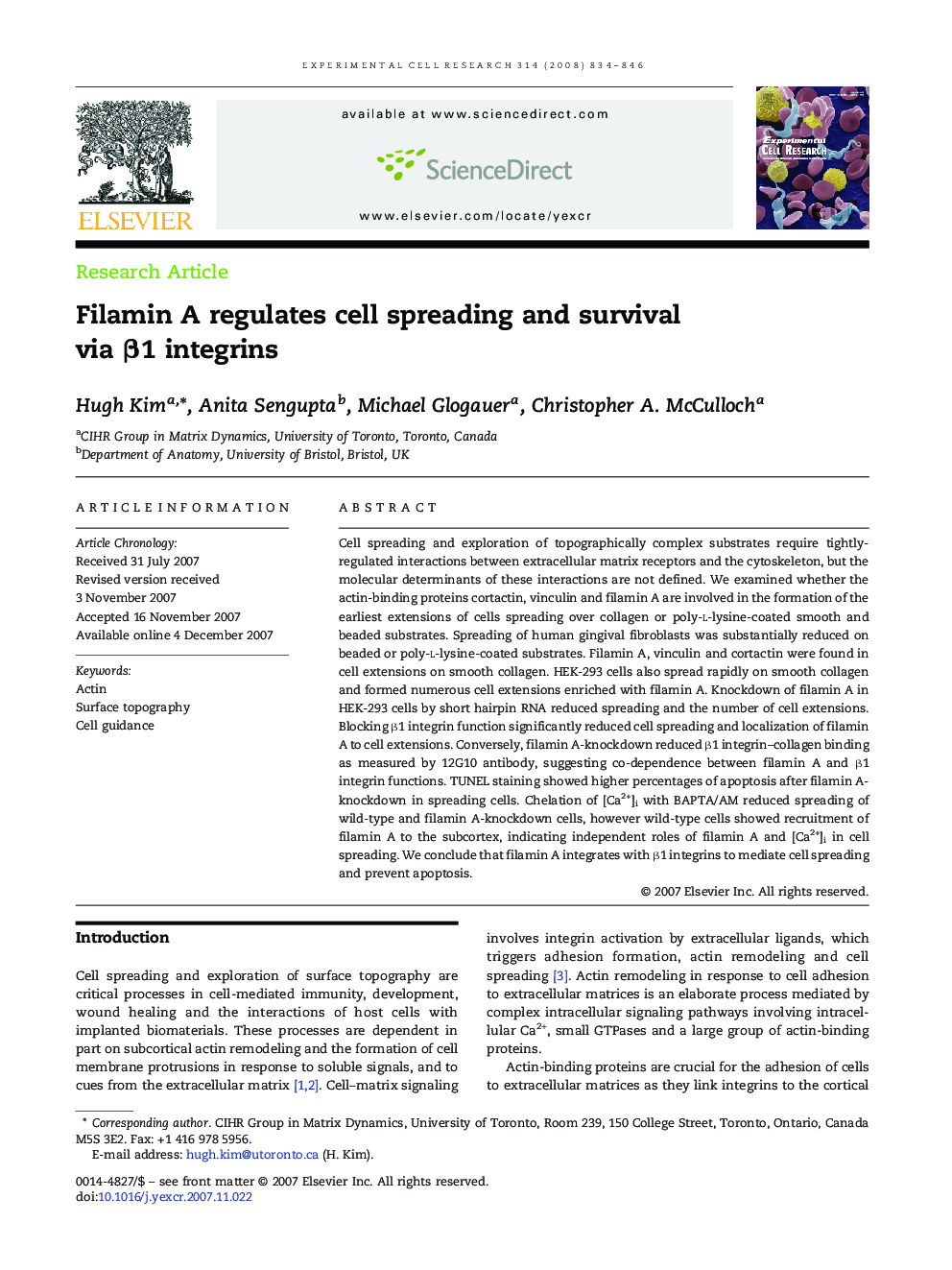| کد مقاله | کد نشریه | سال انتشار | مقاله انگلیسی | نسخه تمام متن |
|---|---|---|---|---|
| 2132335 | 1086684 | 2008 | 13 صفحه PDF | دانلود رایگان |

Cell spreading and exploration of topographically complex substrates require tightly-regulated interactions between extracellular matrix receptors and the cytoskeleton, but the molecular determinants of these interactions are not defined. We examined whether the actin-binding proteins cortactin, vinculin and filamin A are involved in the formation of the earliest extensions of cells spreading over collagen or poly-l-lysine-coated smooth and beaded substrates. Spreading of human gingival fibroblasts was substantially reduced on beaded or poly-l-lysine-coated substrates. Filamin A, vinculin and cortactin were found in cell extensions on smooth collagen. HEK-293 cells also spread rapidly on smooth collagen and formed numerous cell extensions enriched with filamin A. Knockdown of filamin A in HEK-293 cells by short hairpin RNA reduced spreading and the number of cell extensions. Blocking β1 integrin function significantly reduced cell spreading and localization of filamin A to cell extensions. Conversely, filamin A-knockdown reduced β1 integrin–collagen binding as measured by 12G10 antibody, suggesting co-dependence between filamin A and β1 integrin functions. TUNEL staining showed higher percentages of apoptosis after filamin A-knockdown in spreading cells. Chelation of [Ca2+]i with BAPTA/AM reduced spreading of wild-type and filamin A-knockdown cells, however wild-type cells showed recruitment of filamin A to the subcortex, indicating independent roles of filamin A and [Ca2+]i in cell spreading. We conclude that filamin A integrates with β1 integrins to mediate cell spreading and prevent apoptosis.
Journal: Experimental Cell Research - Volume 314, Issue 4, 15 February 2008, Pages 834–846